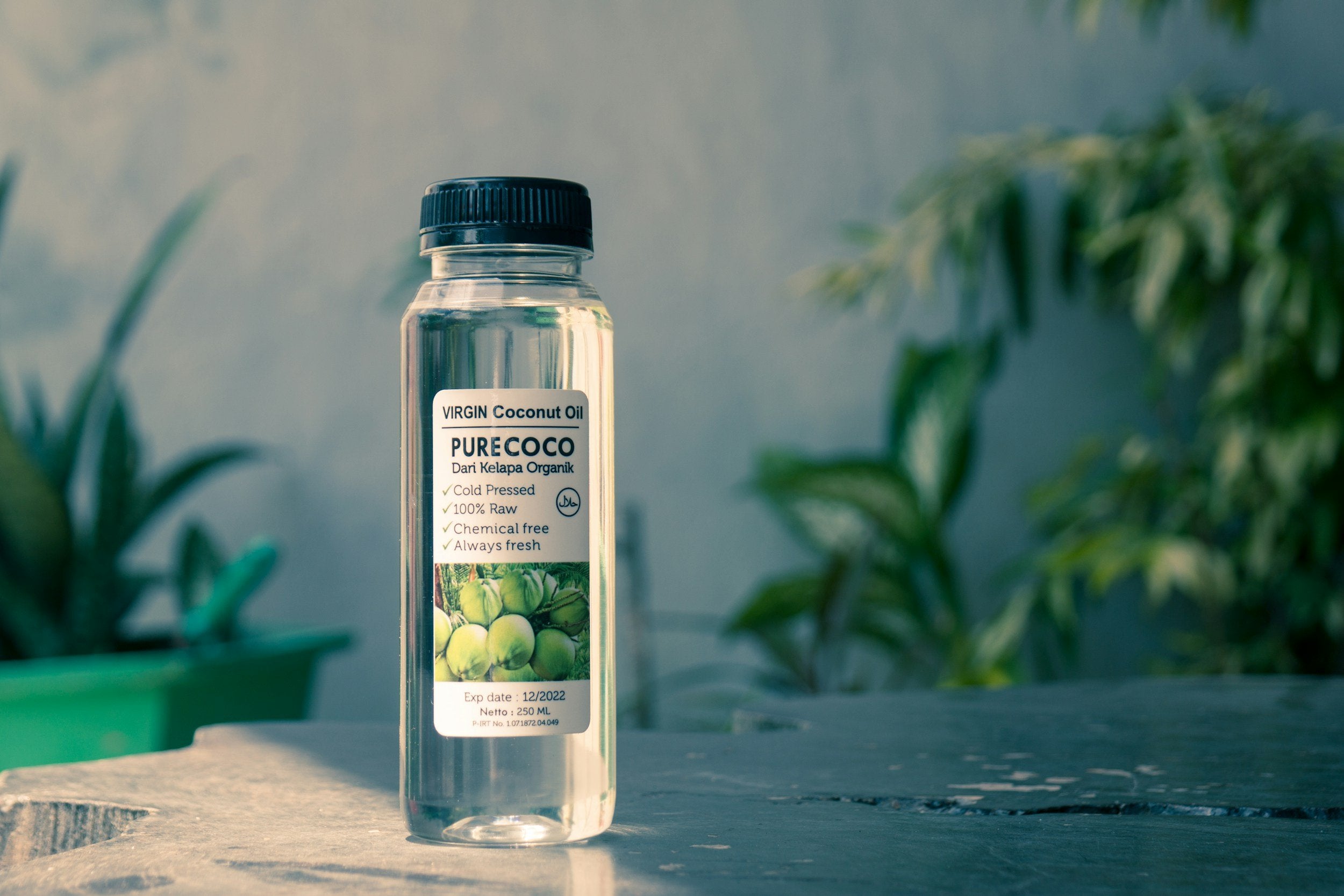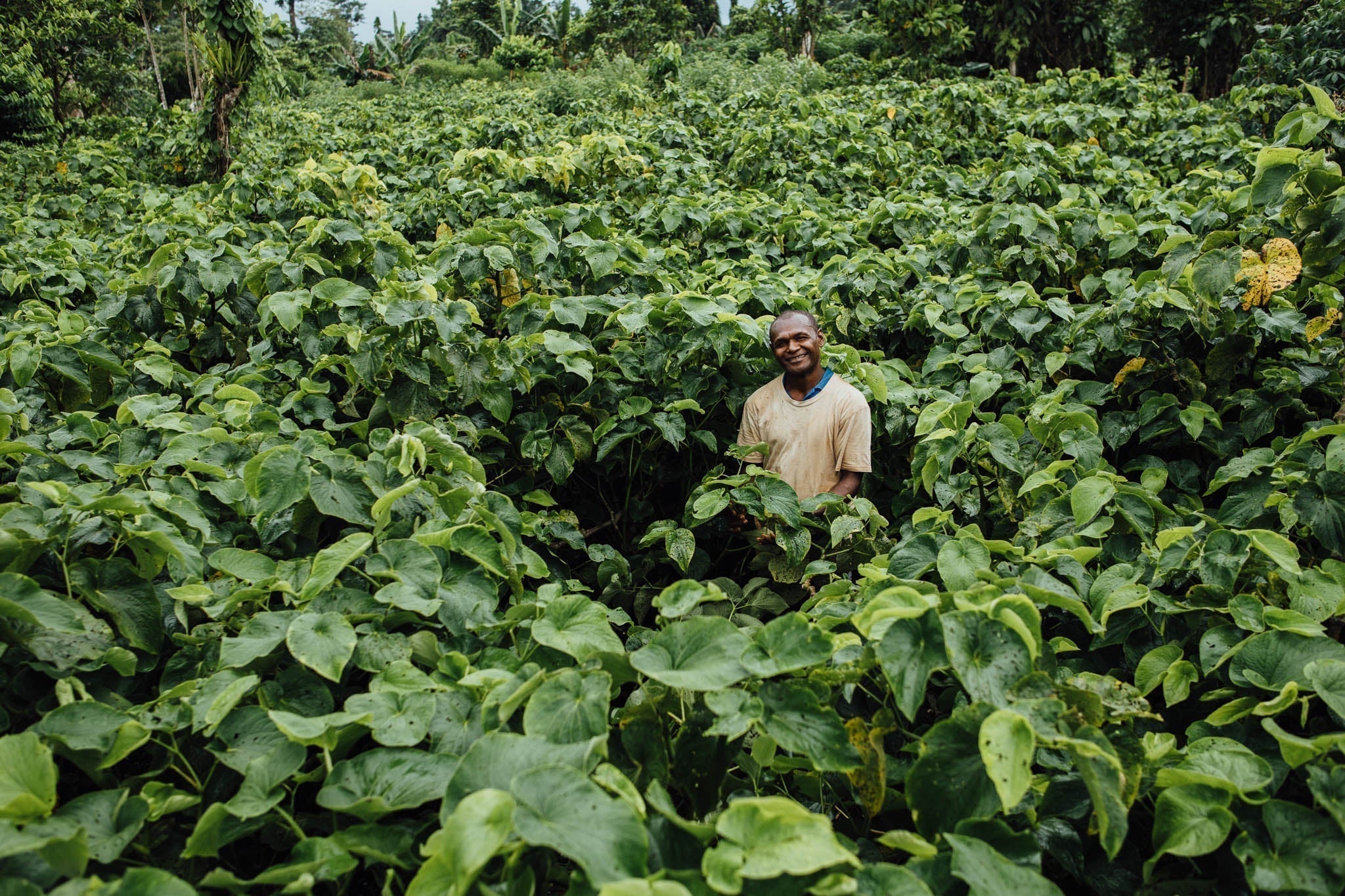The Blender Method vs Kneading Kava in a Strainer (guest post by Root & Pestle): surprising findings!
We know many kava drinkers use blenders to prepare their traditional grind kava. On our kava preparation page, we list the blender method as a “quick” method that can be used to prepare traditional grind kava. To be perfectly honest, we’ve never been huge fans of this method and have often advised new drinkers to opt for traditional/kneading method instead. On a personal level, we’ve always found the method to be quite messy, noisy and not worth the 1-2 minutes one could save by blending vs kneading traditional kava. On a quality level, we also thought blending the powder could result in effective micronisation of the root particles that would then easily pass through the strainer bag and cause unnecessary stomach irritation. At the same time, we’ve acknowledged that some people may feel a bit more comfortable with this method as opposed to squeezing kava by hand. Some may have difficulty with manually squeezing kava, others may value the potentially greater consistency of the resulting product when one can rely on a mechanical solution. We’ve also acknowledged that it’s quite possible that the blender method may produce a stronger drink and hence be a bit more “economic”. Not surprisingly, many new kava drinkers find this method to be the most obvious first choice.
Our friends at Root & Pestle have now decided to scientifically test some of these assumptions. Their general conclusions support our position that the blender method is inferior to traditional kneading of kava. But some of their findings are truly surprising, especially when it comes to evaluating the effects of blending on kava’s potency. It’s a great read and one that will lead us to be a bit firmer in advising against the blender method. Read below to understand why:
![]()
New Insights into the Squeeze Revealed by Root & Pestle R&D.
Traditionally, kava is prepared by sealing the ground plant material in a strainer bag (historically made from woven plant fibres, such as pandanus leaves or coconut husks), immersing the bag in a large bowl (natambea/tanoa) of water, and thoroughly squeezing and kneading it. The bag is then removed from the water, wrung out to extract the last drops, and the makas (used kava powder) is discarded.
An alternative method involves using a high-speed blender (which could be a food processor, smoothie maker, hand blender, or similar device) to impart high-sheer stresses to the kava in the water, simultaneously stirring and shredding it, then filtering the mixture through a strainer bag (and wringing it out afterwards).
Both methods work well enough to prepare a beverage that can impart the desirable effects we are all so familiar with, and using a blender might make kava stronger tasting, but is it really a better extraction method?
Popularity of the blender method:
Putting kava in a blender and then straining the resultant mixture is said to offer a potent shell of kava, and anecdotally, it has garnered some support. People have been dabbling with this for decades, but it really gained prominence back in 2015 with the CTHAR method (Gautz, Loren D., Rachel Li, and H. C. Bittenbender. 2015. Preparing Kava: Optimizing kavalactone extraction in water. Proceedings of Kava 2015 Conference, July 25-26, 2015 at Chaminade University, Honolulu, Hawaii).
CTAHR is a method proposed by Bittenbender et al., which aims to maximise kavalactone extraction. The technique calls for processing kava with water in a blender, but many people overlook the fact that this research was not conducted on commercially available traditional kava powder, which is a very different substance to what their team was working with. When it comes to blenders and kava, there have been many references to CTAHR over the years, including posts such as this one on r/kava: https://www.reddit.com/r/Kava/comments/8w88es/i_found_this_research_on_which_methods_of_water/
Bittenbender’s team investigated 8 extraction variables, with 2 possible conditions each (fresh or dry kava, 20 or 45 °C (60 or 113 °F) water, blender or hand kneaded, 60 or 120 second agitation, 1 or 3 agitation cycles, 1:3 or 1:1 kava to water dilution ratios, fine or large particle sizes, and lateral roots or rhizomes.
These variable conditions lead to 256 possible extraction combinations, however, only a single test each of just 16 unique extraction combinations were trialled to develop the CTAHR method, and only half of those experiments were performed on dry kava (as opposed to fresh green plants), and even the dry material wasn’t “kava powder” like most consumers are used to seeing these days. This doesn’t leave a lot of room to recognise outlying data points, and it also requires quite a bit of inference to arrive at the “optimised” method.
This isn’t a critique of Bittenbender’s work by any means, and our experimental methods have many limitations also, but it is worth highlighting that the CTAHR method may have been reported as something quite different if more combinations had been trialled, or if the experiments were based on extracting traditional kava powders.
Even with so few experiments, ostensibly useful information can be obtained, especially with the help of some statistical analysis, and we thank Bittenbender for his contribution to the growing pool of kava knowledge – the more people experimenting (and reporting their results), the better; His team has added a tremendous amount of value to the kava scene. Nevertheless, it is not easy to isolate with confidence which factors are responsible for which outcomes when multiple variables have been changed for each extraction effort, and the trialled experimental conditions left ample room for further investigation. We’ve performed hundreds of squeeze experiments, and we still have much to learn.
What we did:
Based on commonly reported settings and durations, we tried to emulate something similar to what fans of the blender method were seemingly doing at home; We set our high-powered commercial blender at 7.7/10 (which gave us plenty of blending power without feeling like we were summoning the apocalypse) and ran it for 15 seconds, 30 seconds, 1 minute, 2 minutes, 3 minutes, and 4 minutes, blending batches of 62.5 g of traditional kava powder with 1 L of water, then pouring the mixture into an R&P strainer bag and wringing it out over a bowl. We then analysed the prepared kava by UHPLC in our state-of-the art analytical laboratory.
It should be noted that we didn’t blend continuously for 4 minutes straight, not only because we were trying to avoid significantly over-heating the kava, but we didn’t want to torture our blender either, so we intermittently paused on the longer duration experiments to let things cool off for a minute or so. The times reported represent the actual time spent blending, not the total duration the mixture resided in the blender, although that would have only added a couple extra minutes at most.
Experiments were performed in triplicate and the results were compared to what we could achieve by hand using the same kava to water ratios, trying out a few different styles and intensities of hand-kneading and squeezing (5 minutes each). Squeezing kava is pretty simple, but techniques vary, so we thought we’d take that into account, just in case it made a difference (it can).
The results:
We were underwhelmed by the results of the blender method, both in terms of taste, and perhaps more surprisingly, in terms of kavalactone extraction efficiency.
Our subjective findings:
We found that after 15 seconds of blending, the kava tasted “fine”, but slightly bitter. Bitterness, along with darkening of the beverage, was proportional to the time spent blending, and after 1 minute in the blender, we found the kava became much more bitter. Some might still find it quite tolerable, but we’re pretty fussy about our kava, and we didn’t particularly care for it. After 2 minutes, it became quite warm, much darker, and fairly unenjoyable to drink. After 3 minutes, the kava was very dark, definitely unpleasant to drink (for us), and quite a bit hotter. After 4 minutes of blending, the most common word used to describe the taste was, “gross”, and it also became rather spicey, which we didn’t find meshed well with our taste buds, but some might enjoy the more peppery version of kava that 4 minutes of blending can provide (although getting past the substantial bitterness would likely be difficult for most).
There is no doubt that hand squeezing, regardless of technique or intensity, provided for a beverage that was more enjoyable to consume than anything we could produce with the blender.
Kavalactone concentrations and ratios:
When we averaged out all of our various hand-squeeze efforts and compared those values to the average we could get from blending, we found the blender extracted only 85.92% of the kavalactones that could be extracted on average by hand. That said, the kavalactone extraction efficiency of the blender was proportional to the time spent blending, and the longest duration blend was finally able to pull about as much kavalactone content into the drink as a half-decent hand-squeeze, however, powering through the taste and texture would likely rule out all but the most iron-mouthed kava lovers from blending for 4 minutes.
At 3 minutes or less, the blender resulted in lower kavalactone content in the drink than any of our hand-squeeze tests, except for one. The one exception was the gentlest squeeze we could possibly do and still say it was a squeeze rather than a steep – not really what most would consider a squeeze at all, kind of flopping the bag over in the bowl and softly prodding it with the fingers. Every other squeeze we tried, from “mild” to “aggressive” (think Conan the Barbarian meets Attack of the Giant Anaconda), resulted in stronger kava than the using the blender.
On a slight side note, we found that a moderate squeeze was best. A massively intense squeeze extracted marginally (about 3%) more kavalactones than a relaxing “making dough” squeeze, but the more intense the squeeze, the more bitter the kava became. It required substantially more effort to get those meager kavalactone gains, at the expense of taste. Also, although most kavalactones are extracted with relative consistency independent of squeeze exertion, the more intense the squeeze, the lower the K:DHM and the lower the K:FK ratio became – nudging those tudei-esque compounds up, and our beloved kavain down, relative to the other kavalactones.
Blending also did a much better job at pulling out the “less desirable” compounds than hand squeezing. The extraction efficiency of flavokavains increased slightly in proportion to hand-squeeze intensity, but it rose considerably with the blender, pulling on average 117.48% of the flavokavains compared to hand squeezing, and noticeably less kavain (around 7% less, depending on duration), relative to the other kavalactones. Blending managed to pull out a bit more dihydromethysticin than hand-squeezing too (110.44% compared to hand-squeezing, on average), so if you’ve ever felt any residue from last night’s kava session the following morning, you’ve got even more reason to avoid the blender method.
Traditional kava powder has quite a bit of indigestible fibre, and anyone who’s tried kava without straining the makas out (spilled the bag in the bowl, and didn’t bother to filter it, maybe?) has probably told you it’s rather unpleasant to consume. When the particle size is reduced, as happens in a blender, more of this material can make its way through the strainer bag, and that’s something people with a sensitive stomach may want to avoid as well.
Let’s wrap it up:
In our controlled laboratory experiments, blending adversely impacted taste, shifted the chemotype in an undesirable way (for most), imparted more fibre to the drink, the noise wasn’t particularly conducive to relaxation, and the cleanup was more than enough hassle to outweigh any efforts saved over a traditional squeeze (we didn’t find blending to be easier, quicker, or less effort, but some folks might). We’ll add to this that our production team uses a lot of blades around here, and processing a root as tough as kava is terribly hard on equipment; If you’re committed to the blender, be prepared for its life to be shortened significantly.
All these sacrifices could be worth it to a handful of people when weighed against potential improvements in kavalactone extraction efficiency, but that would require significant gains, which we didn’t see. In fact, even a half-hearted squeeze was enough to pull about the same amount of kavalactones into the drink as 3 minutes in our blender, and the hand-squeezed kava always tasted much better.
For people who are unable to perform a traditional kava squeeze, or people who prefer their kava a bit on the goopier, hotter, or more bitter side, with a little more indigestible fibrous content, and the chemotype shifted slightly closer to that of tudei kava, the blender method might be great, but for us, it’s a hard no.
We, the R&D team at Root & Pestle, wish you all well, however you choose to prepare your kava.
Our additional comment: For those who still want a mechanical solution, there might be a third way: small powder mixers (like the ones used to stir protein powders in water/juice). These stirrers soak and agitate root particles without generating much heat and without chopping the root particles into smaller bits. We’ve been occasionally using these stirrers at the Four Shells Kava Lounge to prepare small amounts of specific cultivar kavas and have found these to create kava that is substantially the same as hand-kneaded kava. They are easy to use and rather quiet, but only hold max 500ml of liquid. We are not sure if scientific analysis could confirm our subjective assesment of the effectiveness of these little devices, but our subjective perception is that these can do the job. We still prefer the traditional way, but if for some reason you are unable to knead kava by hand and prefer traditional grind kava over instant kava, consider getting a small powder stirrer as an alternative to a powerful blender. These stirrers are quite cheap (apx $20 each as of October 2024). Feel free to e-mail us for more info.






Leave a comment
This site is protected by hCaptcha and the hCaptcha Privacy Policy and Terms of Service apply.